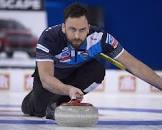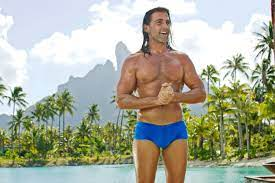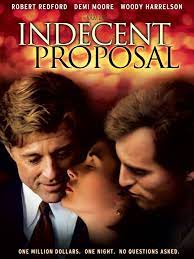I am back from Lethbridge, struggling to jump back on the
moving train that is my life after escaping into curling nirvana for 10
exciting days. The Brier this year, and everything leading up to it has been an
emotional rollercoaster.
First, I was not supposed to even be on the ride. I had said
that I was stepping away from the game back in November, only to find out that
my team still needed me after my replacement went down with a wrist injury. After
thinking my competitive career was at an end, I was called back into service.
We then won Charlevoix a few weeks later. I had never seen a
team play so well. Felix was on fire, and everything was falling into place. I
was back to practicing, and I could not wait for a week at Provincials with my team.
But then, a wave of Covid hit. Events cancelled. Clubs closed. And
provincials delayed. I spent January throwing practice rocks into empty houses,
once again prevented from practicing as a team, all for provincial that was
looking less and less likely to occur.
We were in a very awkward spot. We were without question the
top ranked team in the province by a pretty wide margin (if you go by the
national raking system), but we were told that if there were to be no
provincials, there would be a selection process to pick a team to send. And who
knew what that meant.
We waited. We practiced. We waited some more, for what felt
like an eternity. As restrictions started to
loosen, there was hope that Quebec could run a provincial. We practiced. We
waited. We had Zoom calls. Then they announced there would be no provincial.
And we waited some more.
I know it sounds self-serving or disingenuous to say that we wanted a
provincial, but we absolutely wanted a provincial. We wanted to earn our spot
at the Brier, and we honestly believed we would win it fair and square. Also, I
know that the intensity and pressure of a Provincial would be a great way to
prepare us for a week against the country’s best. And if somebody beat us at provincials, then so
be it.
If my house was on fire, and I had to choose a single possession
to save from the flames, it would be my purple heart from 2018. (A Purple Heart
is the crest given to provincial winners). That crest represents years of hard
work and perseverance. I earned it. And I damn sure wanted to earn another one this year.
But instead, we were anointed Quebec’s representatives. Some
in our province complained at the choice, given that I had announced my retirement
earlier this year. I think that is massively unfair to both me and especially my
teammates, who worked so hard to get to the level they are at, and who I expect
to keep winning long after I am gone. I believe we were the right choice for the Brier.
Then, with the selection process behind us, we then found out
that Martin had contracted Covid, within a week of us leaving for Lethbridge. Our
last week was spent learning about CT levels, isolation protocols and
incubation periods. Not exactly the ideal pre-event prep.
We found out all of 6 hours before our televised game
against arguably the Best Team in the World that Martin would even be able to
play. We struggled to find our legs against Gushue in that game, and got thoroughly schooled. We then won vs.
the Territories, then got demolished again, this time by Brad Jacobs.
We then lost a game that we should have won. We played a
brilliant game against Jason Gunnlaugson, only to blow it on a very bad call that
will haunt me for many years to come. We dropped a game to BC where we should have
been better. We finished strong against Nova Scotia and Manitoba, and got the
added bonus of having our last 5 ends televised, as we put together a crafty 4
in the 9th end to knock Mike McEwen into a tie-breaker.
In the NFL, there is an expression that says: “You are your
record”. We were 4-4. We could have won one or two more had we been sharper,
and we could have lost one more had our opponents been better. All in all, 4-4
is fair for how we played. We finished a game out of the playoffs. Unfortunately, I felt like we were finally hitting
our stride as the tournament ended for us.
A few other observations/stories from the Brier:
- I have no idea how I do NOT have Covid. Mark Nichols
and the rest of Team Gushue were safe all week, avoiding crowds and wearing
masks off the ice, while we were in the Patch, singing karaoke and signing autographs.
And he gets Covid. Life is not fair. I feel for them, and I am cheering for
them to become the first team to win the Brier 3-handed
- I had forgotten how amazing it is to play this
game in front of cheering fans. It is indescribable to the average curler. It
is both terrifying and exhilarating, but mostly just fun
- I need to say that I love JF Trepanier. I just
want to highlight that he put up 1st all-star numbers at lead, and
is the funniest person I have ever played with. And he got kicked out of the
Brier patch for dancing with a cardboard cutout of the Rock (I mean Dwayne Johnson,
not an actual rock). Epic.
Changing the Brier
Here we go again. As predictable as the spring, Curling pundits and some TopTeams will now call for sweeping changes to the Brier. They will
poo-poo provincial representation and point to the crappy records of the weaker
provinces / territories as proof positive that the current format is broken.
Kevin Martin & friends will wail on poor Nunavut, and point out that PEI,
Newfoundland and the Yukon only managed one win apiece, all against each other.
They will talk about the “entertainment value” of the product being the main
goal, and point out that residency restrictions put limitations on our best
teams.
In short they will call for the Brier to be better, and point to its declining ratings and attendance as proof that the current format is broken.
This is like the arsonist who set fire to your house giving you a lecture on fire safety.
I call bullshit on this need for radical change.
Yes, the Brier is at a crossroads. The consensus seems to be that
change is necessary, as attendance and TV ratings continue to decline.
(although I suspect this year’s attendance issues are likely more about Covid than
lack of interest)
We all agree that making the product more entertaining will
help, but where views differ is on how to get there. Some would say to make the Brier
more exclusive, with only the top tour teams invited and limit provincial reps.
Others would have the Brier go back to its roots, and be an event only for “amateurs”
(like the US Amateur is for golfers) and discourage the pros from even playing.
I think moves in either direction would hasten the decay of the Brier.
I am of the mindset that the current format/number of teams
seems like a good compromise. They say the measure of a good compromise is that
nobody feels satisfied, and this seems to be the case here. You have provincial
representation, but you have some spots available for the hadful of "pro" teams. Perhaps
the only change I would suggest would be to include the Wildcard teams BEFORE
the provincial playdowns. This would help grow the game in places like
Newfoundland and Northern Ontario, by giving more teams a hope of making it,
and give the stronger provinces more representation.
In short, the current format is not perfect. (I would also suggest that new playoff format is unnecessarily complicated). But removing provincial representation will kill the event. Look at a team like Colton
Flasch this year. Look at the pride they take in wearing the Saskatchewan
green. Look at McEwen with the Manitoba Buffalo on his back. Provinces are what
made the Brier into what it is, and are still an essential part of the show.
But we also need to ensure that the top teams in the country are part of the solution. A Brier without the best teams is not sustainable. It would be destined to become a Tier B event if held only for the "amateur" teams.
I was lucky enough to spend some time chatting with Gerald
Shymco at the Brier this year. For those of you who do not know Gerald, he lost the Brier
semi-final to Guy Hemmings on an amazing draw to the pin in 1999.
Gerald is what the Brier should aspire to be. His love for the game, his genuine
love for the traditions and his disdain for how the game has evolved should give
pause to all curlers screaming for change. The Brier works because it is the
one event that is still bigger than the players. It still draws thousands of
fans (and volounteers!) and can produce moments like the one he had with Guy in 99.
(here the link to the shot, and watch the post-game bear-hug he gave Guy after losing
to him).
Guy draw against Shymco
A few other points:
- I sadly agree that Nunavut should not be at the Brier. As
much as I love Peter and his crew, they are just not ready and need to take steps
to get better. In their defense, they told me that their club was not even open
for most of this season, and obviously spieling is not an option. But I think
the Nunavut association has to look at some alternatives to sending lambs to the
slaughter every year. Maybe they should give up their spot for x years in exchange
for some funding to repair/upgrade their curling club or for junior development.
There are better ways to grow the game in Nunavut than to have a team be cannon
fodder at the Brier.
- A few words on entertainment. Here is a
controversial statement: the best teams are evolving towards a more boring style of play. I say this not to as
an insult: if anything, I mean it as a compliment. I aspire to be good enough to
make my games be boring. The top teams are so good, so disciplined, so methodical
that I find they can become boring to watch, and it can lead to boring games. I do
not mean to be disparaging to what they have accomplished, and the hard work it
takes to be as good as they are. But if your main concern is the
entertainment value of the product, then you need to protect the game
against the idea that boring is the best way to win. This same evolution towards boring is what drove the game to the
free guard zone 30 years ago. The best teams were too good and made the game
boring. The same is true now. Maybe we need to go to a 6 or 7 rock FGZ. Or
maybe just no takeouts on the first 6-7 rocks, even on rocks that are in the
rings (like Mixed Doubles). And maybe we should use rocks that are LESS lively
and harder to take out. And let’s remove stopwatches. In short, anything we can
do to make the best teams shoot slightly lower percentages would be good for the
game. I know this sounds counterintuitive, but the possibility of missing every
once in a while makes for entertaining content. We need to find ways to fight boring.
- It is not good for a sport when your overtime,
which is supposed to be the most exciting part of the game, has all the drama
of an NFL extra-point conversion. The best teams are winning 90%+ of extra end
games when they have the hammer. The no-tick rule coming soon will help. It should
give a bit of a fighting chance to the team without the hammer, to create a bit
more entertainment.
***
Anyway, as I reflect on my 3rd and hopefully not
last Brier, I am just so grateful for the experience.
A giant thank you goes out to those who supported us
throughout our journey, both our sponsors and our fans. Thanks to the volounteers and fans in Lethbridge that helped make the event feel like the Brier after what has been 2 long years.
The Brier is a tradition that I grew up watching and aspired
to my whole curling life. The chance to be a part of it again is something I will
remember forever.





